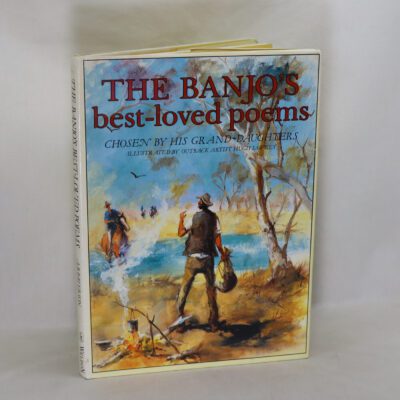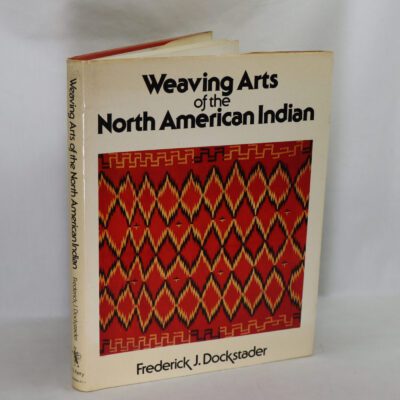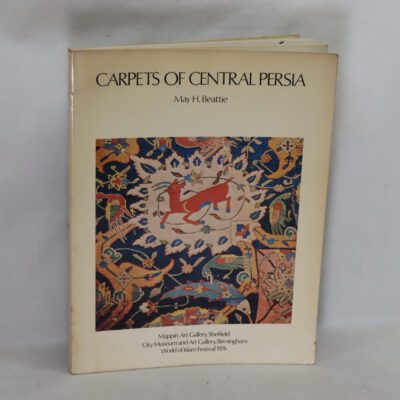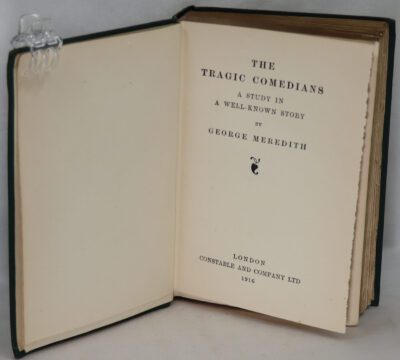Leonardo da Vinci.
By Kenneth Clark
Printed: 1958
Publisher: Penquin Books.
| Dimensions | 11 × 18 × 1 cm |
|---|---|
| Language |
Language: English
Size (cminches): 11 x 18 x 1
Condition: Fair (See explanation of ratings)
Your items
Item information
Description
Paperback. Black title and da Vinci drawing on the blue cover.
We provide an in-depth photographic presentation of this item to stimulate your feeling and touch. More traditional book descriptions are immediately available
-
This used book has a £3 discount when collected from our shop
For conditions, please view the photographs
Kenneth Clark’s writing style is an artwork in itself. This is a study of his art and techniques, not such much a biography of the artist
Leonardo di ser Piero da Vinci (15 April 1452 – 2 May 1519) was an Italian polymath of the High Renaissance who was active as a painter, draughtsman, engineer, scientist, theorist, sculptor, and architect. While his fame initially rested on his achievements as a painter, he has also become known for his notebooks, in which he made drawings and notes on a variety of subjects, including anatomy, astronomy, botany, cartography, painting, and palaeontology. Leonardo is widely regarded to have been a genius who epitomised the Renaissance humanist ideal, and his collective works comprise a contribution to later generations of artists matched only by that of his younger contemporary Michelangelo.
Born out of wedlock to a successful notary and a lower-class woman in, or near, Vinci, he was educated in Florence by the Italian painter and sculptor Andrea del Verrocchio. He began his career in the city, but then spent much time in the service of Ludovico Sforza in Milan. Later, he worked in Florence and Milan again, as well as briefly in Rome, all while attracting a large following of imitators and students. Upon the invitation of Francis I, he spent his last three years in France, where he died in 1519. Since his death, there has not been a time where his achievements, diverse interests, personal life, and empirical thinking have failed to incite interest and admiration, making him a frequent namesake and subject in culture.
Leonardo is identified as one of the greatest painters in the history of Western art and is often credited as the founder of the High Renaissance. Despite having many lost works and fewer than 25 attributed major works – including numerous unfinished works – he created some of the most influential paintings in the Western canon. The Mona Lisa is his best known work and is the world’s most famous individual painting. The Last Supper is the most reproduced religious painting of all time and his Vitruvian Man drawing is also regarded as a cultural icon. In 2017, Salvator Mundi, attributed in whole or part to Leonardo, was sold at auction for US$450.3 million, setting a new record for the most expensive painting ever sold at public auction.
Revered for his technological ingenuity, he conceptualised flying machines, a type of armoured fighting vehicle, concentrated solar power, a ratio machine that could be used in an adding machine, and the double hull. Relatively few of his designs were constructed or were even feasible during his lifetime, as the modern scientific approaches to metallurgy and engineering were only in their infancy during the Renaissance. Some of his smaller inventions, however, entered the world of manufacturing unheralded, such as an automated bobbin winder and a machine for testing the tensile strength of wire. He made substantial discoveries in anatomy, civil engineering, hydrodynamics, geology, optics, and tribology, but he did not publish his findings and they had little to no direct influence on subsequent science.
Kenneth Mackenzie Clark, Baron Clark (13 July 1903 – 21 May 1983) was a British art historian, museum director and broadcaster. His expertise covered a wide range of artists and periods, but he is particularly associated with Italian Renaissance art, most of all that of Leonardo da Vinci. After running two art galleries in the 1930s and 1940s, he came to wider public notice on television, presenting a succession of programmes on the arts from the 1950s to the 1970s, the largest and best known being the Civilisation series in 1969.
The son of rich parents, Clark was introduced to the arts at an early age. Among his early influences were the writings of John Ruskin, which instilled in him the belief that everyone should have access to great art. After coming under the influence of the art experts Bernard Berenson and Roger Fry, Clark was appointed director of the Ashmolean Museum in Oxford aged twenty-seven, and three years later he was put in charge of Britain’s National Gallery. His twelve years there saw the gallery transformed to make it accessible and inviting to a wider public. During the Second World War, when the collection was moved from London for safe keeping, Clark made the building available for a series of daily concerts which proved a celebrated morale booster during the Blitz.
After the war, and three years as Slade Professor of Fine Art at Oxford, Clark surprised many by accepting the chairmanship of the UK’s first commercial television network. Once the service had been successfully launched he agreed to write and present programmes about the arts. These established him as a household name in Britain, and he was asked to create the first colour series about the arts, Civilisation, first broadcast in 1969 in Britain and in many other countries soon afterwards.
Among many honours, Clark was knighted at the unusually young age of thirty-five, and three decades later was made a life peer shortly before the first transmission of Civilisation. Three decades after his death, Clark was celebrated in an exhibition at Tate Britain in London, prompting a reappraisal of his career by a new generation of critics and historians. Opinions varied about his aesthetic judgement, particularly in attributing paintings to old masters, but his skill as a writer and his enthusiasm for popularising the arts were widely recognised. Both the BBC and the Tate described him in retrospect as one of the most influential figures in British art of the twentieth century.
Want to know more about this item?

Share this Page with a friend











